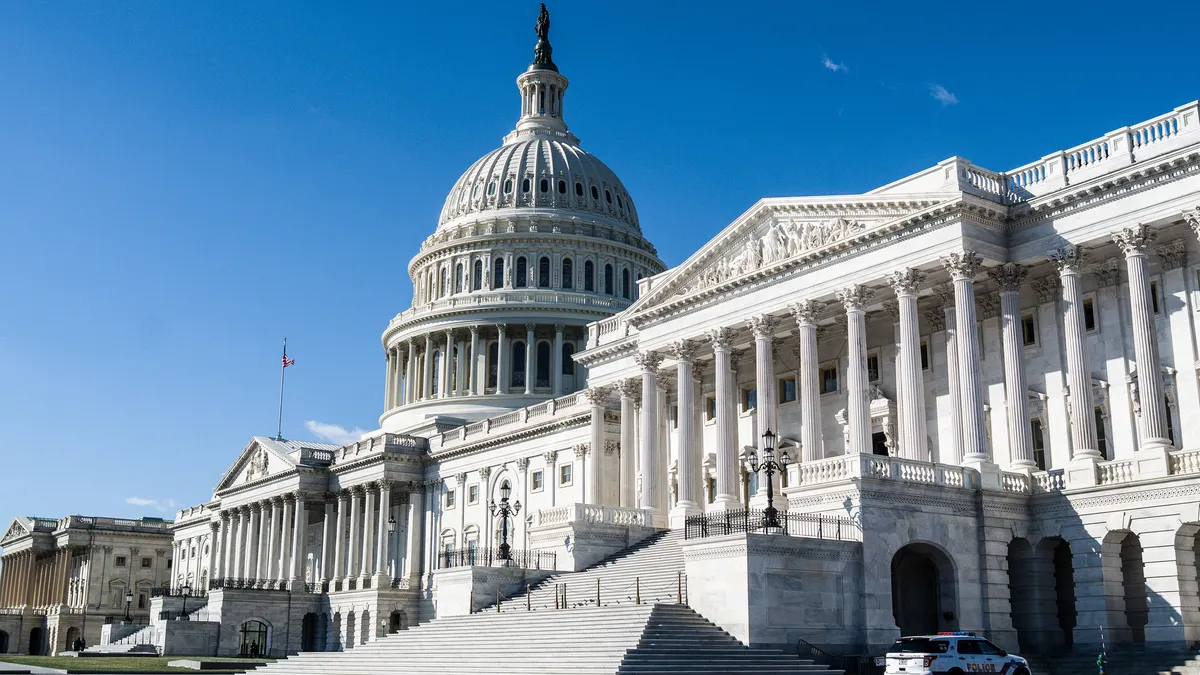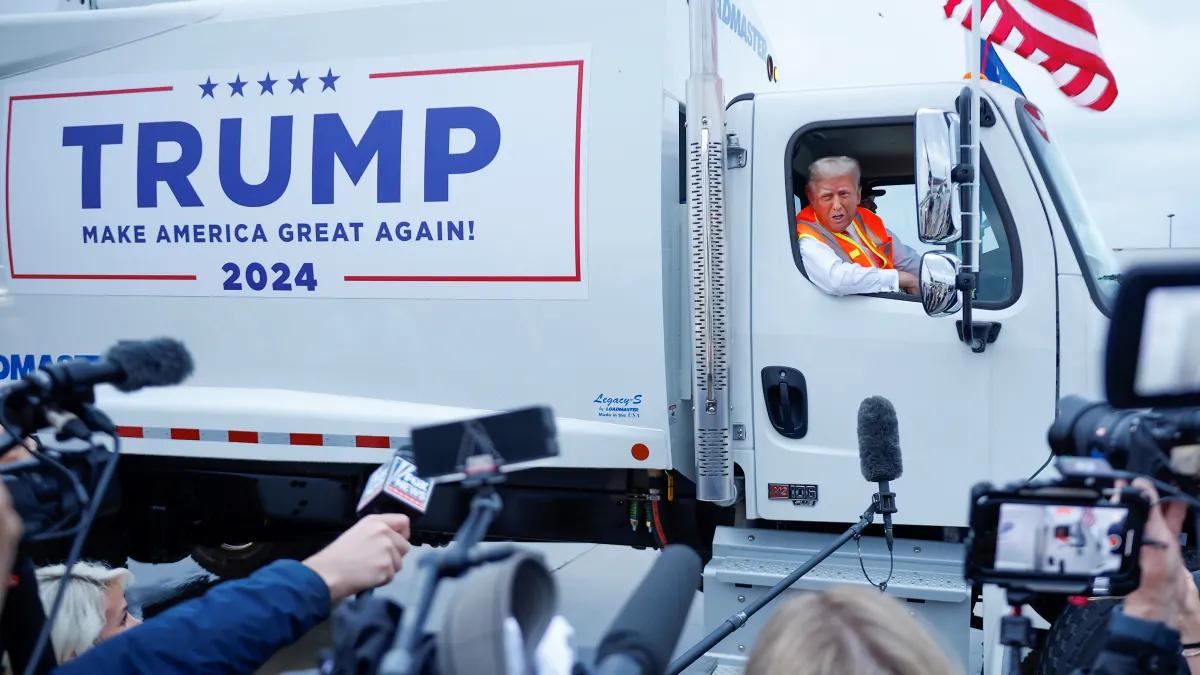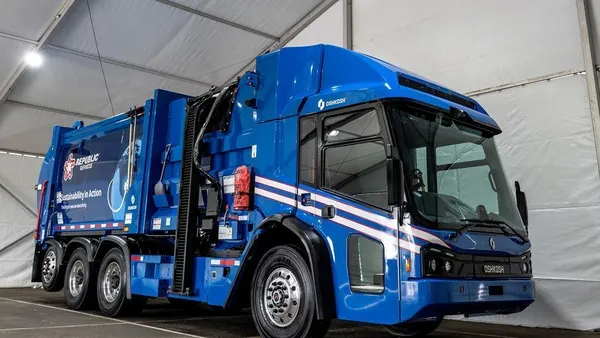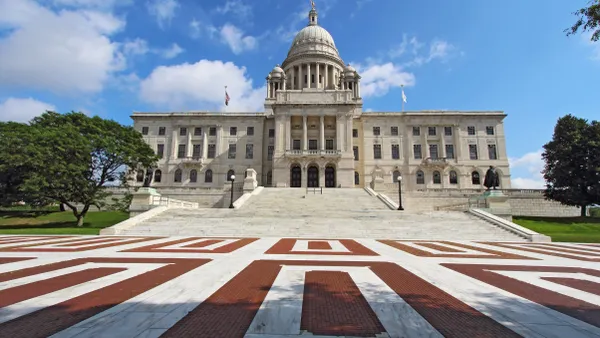A little more than a month after they urged President Trump to develop a federal plastic waste strategy, Sen. Tom Udall, D-N.M., and Rep. Alan Lowenthal, D-Calif, are taking matters into their own hands.
The lawmakers released an outline last week of a sweeping plan to address plastic pollution, with a goal of introducing the bill this fall. Stakeholders are invited to submit comments by Aug. 21, 2019.
"We have passed a tipping point in the plastic pollution crisis," Udall said in a press release. "The ripple effects of plastic waste are everywhere: in our neighborhoods, our rivers and oceans, our food and water, and even [sic] inside our bodies. And on top of all that, the public is having to shell out more and more of their hard-earned money to fund clean-up and disposal of these products that were manufactured and sold — for a profit."
"After decades of treating our oceans and rivers as plastic dumping grounds, we now face a global plastic pollution crisis," said Lowenthal. "Countries around the world have acknowledged this crisis and begun taking steps to apply solutions. It is past time for the United States to do the same."
Legislative outline
The upcoming legislation — which aims to "prevent plastic pollution from consumer products from getting into animal & human food-chains, landscapes, and waterways across the United States and into our oceans" — pushes for a wide-ranging set of measures, including:
-
Extended producer responsibility (EPR). As a condition of sale, producers will be required to design, manage and finance end-of-life programs for products and packaging. Industry will also be incentivized to develop more sustainable alternatives.
-
Nationwide container deposit requirements. Non-refunded deposits would go into a federal fund to assist with collection infrastructure. Major beverage retailers would be required to install and operate reverse vending systems to promote container collection.
-
Carryout bag fee. The fee would be deposited into a federal fund.
-
Single-use plastic bans. The ban would apply to items such as expanded polystyrene, bags, cups, lids, cotton buds, cutlery, plates, straws, packaging and stirrers. Exceptions will be made for individuals with disabilities until adequate alternatives are developed.
-
Labeling requirements. Plastic consumer products would require clear, standardized labeling indicating correct disposal method.
-
Awareness-raising measures. States would be encouraged to educate consumers on the impact of single-use plastics as well as available reuse systems and waste management options.
-
Recycling targets. Standardized single-use plastic bottle collection targets would be established for states and communities. A requirement would also be set for bottles, packaging and other products to be made from 100% recyclable materials.
-
Federal waste reduction assistance. Proceeds from a federal fund, carry-out bag fees, unused container deposit requirements and other sources would go toward pollution reduction, remediation programs and innovation research.
-
"Clean Cities Program." The program would use smart technologies and social media to help local governments identify pollution hotspots and implement source reduction solutions.
States that prohibit local governments from implementing "more aggressive measures" to reduce plastic consumption (i.e., single-use product fees for consumers) would lose funding from the federal fund.
Initial reactions
The Product Stewardship Institute (PSI) praised the legislation's EPR component.
"Failure to place responsibility on producers through effective [EPR] legislation has left many local governments and taxpayers in a difficult bind across the U.S., with many communities shuttering their recycling programs over the past year or facing deficits," PSI said in a statement to Waste Dive. "EPR is the only transformational solution to the current crisis. Voluntary efforts chip away at the margins but will not change the situation in any fundamental way … In other nations, EPR has been a success story, one that has raised recycling rates significantly, while recycling in the U.S. has been stagnant for nearly two decades."
Heidi Sanborn, executive director of the National Stewardship Action Council, similarly commended the bill's combination of EPR and single-use product bans.
"We also especially appreciate the effort to protect local governments from being preempted from implementing new and innovative measures … and helping local governments by supporting them with funding to remediate litter and increase recycling," she told Waste Dive via email.
Susan Collins, executive director at the Container Recycling Institute (CRI), welcomed the proposed inclusion of a nationwide container deposit scheme. 300 million people around the world were covered by container deposit programs as of 2017, she told Waste Dive — a number expected to double by 2022. Factoring in the EU's new single-use plastics directive — which, per its 90% collection goal for plastic bottles, will spur the creation of new deposit laws in approximately 16 countries — CRI estimates that nearly one billion people will be covered by such requirements by 2025.
The American Chemistry Council, a trade association for North American chemical manufacturers, issued a press release pointing to the "unintended consequences" of plastic bans, advocating instead for increased product recyclability.
"SWANA agrees that significant measures need to be taken to reduce marine litter and encourage the recycling and reuse of plastic," CEO David Biderman told Waste Dive in an email. According to Biderman, the organization is reviewing the proposal summary and "will be speaking with the sponsors."
The NWRA, whose members have historically opposed container deposit and EPR legislation in multiple states, did not respond to a request for comment prior to publication.














